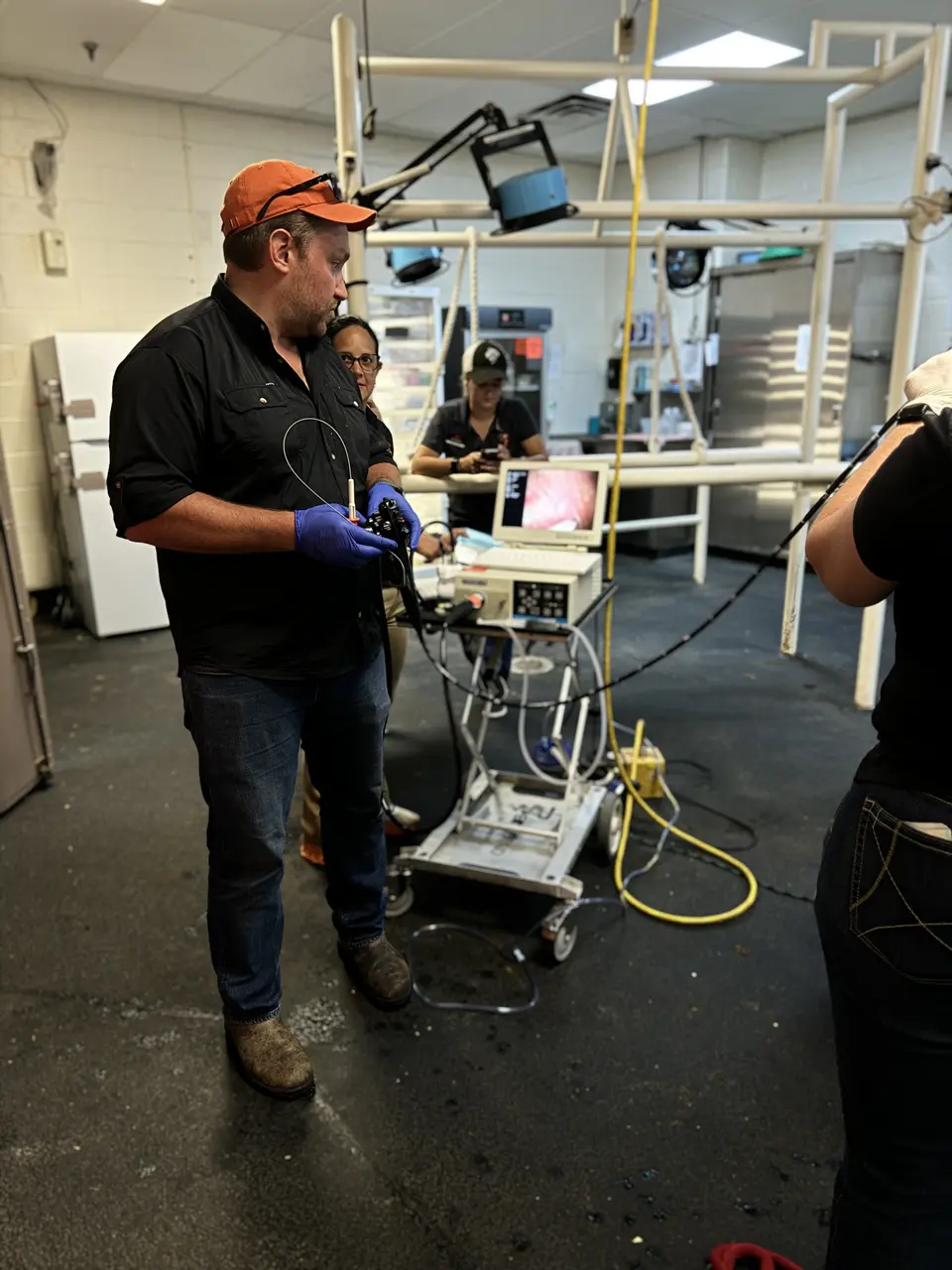1. Enhanced Diagnostic Precision
The incorporation of equine endoscopy into veterinary practice significantly enhances diagnostic precision. This advanced diagnostic tool allows for the detailed visual examination of the horse’s internal anatomy, including the respiratory, gastrointestinal, and urinary systems, without the need for invasive surgical procedures. By offering a real-time view in 1080p high-definition, veterinarians can identify various conditions, from gastric ulcers to respiratory obstructions, with unprecedented accuracy. This level of detail not only facilitates a more accurate diagnosis but also enables the identification of issues that might otherwise go unnoticed. Today’s endoscopes feature pixels in the millions!
Early detection is another cornerstone benefit of equine endoscopy, particularly in identifying conditions like squamous cell carcinoma or gastrointestinal disorders. By capturing the earliest signs of disease, this tool empowers veterinarians to intervene sooner, often before the horse exhibits external symptoms. This proactive approach to veterinary care can be the difference between a manageable condition and one that escalates into a more severe, potentially life-threatening situation.
2. Minimally Invasive Procedure
Endoscopy stands out as a minimally invasive diagnostic tool, offering a significant advantage over traditional surgical techniques. The procedure involves the use of a thin, flexible tube equipped with a camera and light source, allowing veterinarians to explore internal structures through small orifices or incisions. This not only reduces the risk of complications and infections but also minimizes the trauma and discomfort experienced by the horse, leading to faster recovery times. The minimally invasive nature of endoscopy means that it can often be performed with the horse under sedation rather than general anesthesia, further reducing risks and recovery periods.
3. Rapid Identification of Gastrointestinal Issues
Gastrointestinal issues in horses, such as ulcers or anterior enteritis, can be particularly challenging to diagnose with non-invasive methods. However, equine endoscopy provides a direct view inside the horse’s gastrointestinal tract, allowing for the rapid identification of such issues. This capability not only facilitates immediate intervention but also aids in the accurate assessment of the condition’s severity. By enabling specific dietary and medical treatments to be administered right away, endoscopy significantly improves the prognosis for horses with gastrointestinal complaints.
4. Early Detection of Respiratory Conditions
Respiratory conditions in horses, if left undiagnosed or untreated, can lead to significant health complications and performance issues. Equine endoscopy offers a critical advantage in the early detection of respiratory disorders, such as exercise-induced pulmonary hemorrhage (EIPH) or laryngeal hemiplegia. By visually examining the airways for signs of disease, veterinarians can initiate treatments earlier, often preventing the progression of the condition and enabling a quicker return to optimal health and performance levels.
5. Cost-Effective Health Management
While the initial investment in endoscopic equipment might seem substantial, the long-term benefits offer significant cost savings for veterinary practices and horse owners alike. By facilitating early diagnosis and treatment, equine endoscopy reduces the need for more invasive and costly procedures down the line. Moreover, the ability to accurately diagnose and treat conditions early often results in shorter recovery times and less medical management over the horse’s lifetime, contributing to overall more efficient and cost-effective health management.
6. Improved Treatment Monitoring
Beyond its diagnostic capabilities, equine endoscopy plays a pivotal role in monitoring the efficacy of ongoing treatments. For conditions such as gastric ulcers or respiratory diseases, follow-up endoscopic exams can provide tangible evidence of healing or indicate the need for treatment adjustments. This capability not only ensures that horses are receiving the most effective care but also instills confidence in horse owners, knowing that the treatment’s effectiveness is being closely monitored. Through improved treatment monitoring, veterinarians can achieve the best possible outcomes while avoiding unnecessary or ineffective treatments.
7. Enhanced Client Trust and Communication
The use of equine endoscopy significantly enhances client trust and communication. Being able to visually share and explain findings to horse owners demystifies the diagnostic process and helps in building transparency. This visual evidence can be indispensable in discussing treatment options, expected outcomes, and the overall importance of recommended procedures. Additionally, the ability to provide immediate visual confirmation of a condition can alleviate owner anxieties, leading to increased satisfaction with the veterinary service provided. Ultimately, this strengthens the veterinarian-client relationship, fostering a partnership based on trust and mutual understanding.



